Come up with a list of keywords
Embarking on your SEO journey? The first step is keyword research. This process helps you understand what your target audience is searching for and how to reach them effectively.
Let’s dive into the world of keywords and discover how to build a solid foundation for your SEO strategy.

1. Understanding keyword research
Keyword research is the backbone of any successful SEO strategy. It involves identifying the terms and phrases your potential customers use when searching for products or services like yours.
By understanding these keywords, you can tailor your content to match user intent, improving your chances of ranking higher in search results.
2. Using keyword research tools
To find relevant keywords, start by brainstorming topics related to your new website and entering them into keyword research tools. These tools will generate lists of related keywords, along with data on search volume and competition.
Prioritize keywords with a good balance of search volume and low competition that align with your content. There are lots of tools which SEOs use to do this: Ahrefs and Mangools are the basic ones.
To discover more relevant keywords, consider using the SEO keyword suggestion tool from Rush Analytics. This tool can help you uncover additional keywords and refine your targeting strategy.
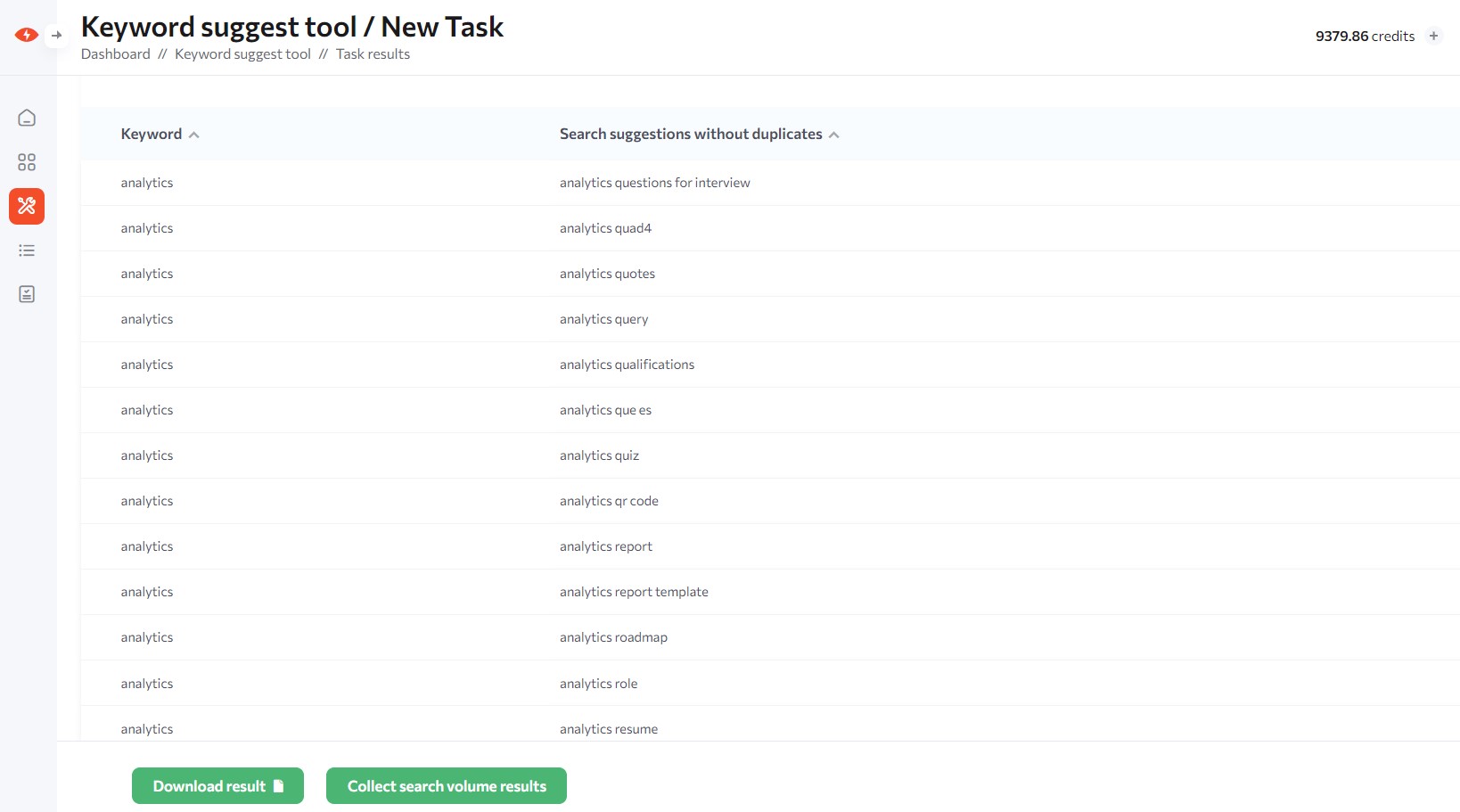
3. Analyzing keyword metrics
Once you’ve gathered a list of potential keywords, it’s time to analyze their metrics. Focus on three key factors:
- Search volume: How often the keyword is searched for
- Competition: How many other websites are targeting the same keyword
- Keyword difficulty: How challenging it would be to rank for this keyword
Aim for a balance between search volume and competition. High-volume keywords with low competition are ideal, but they’re rare. Often, you’ll need to find a sweet spot that offers reasonable search volume with manageable competition.
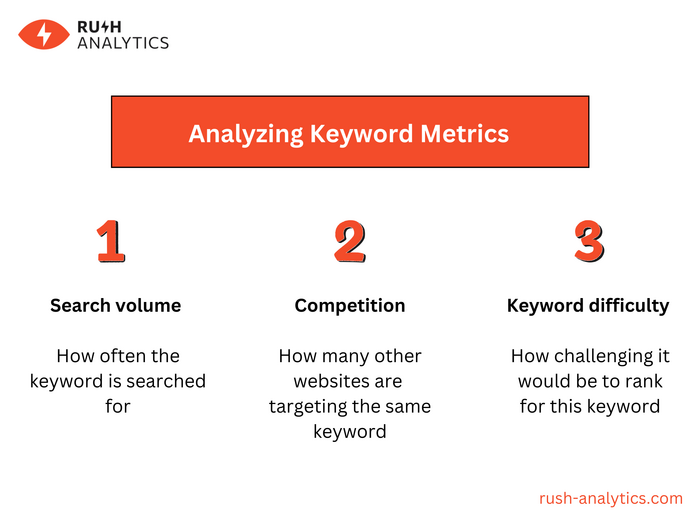
4. Long-tail and short-tail keywords
Keywords come in different shapes and sizes. Short-tail keywords are typically one or two words long and have high search volumes but fierce competition. Long-tail keywords, on the other hand, are longer phrases that are more specific and usually have lower search volumes but less competition.
For new websites, focusing on long-tail keywords can be a smart strategy. They’re easier to rank for and often indicate higher user intent, leading to better conversion rates.
5. Competitor keyword analysis
Don’t reinvent the wheel — learn from your competitors! Analyze the keywords your successful competitors are ranking for. Use competitive analysis tools to gain insights into their keyword strategies and identify areas where you can outperform them.
You can use the Rush Analytics Rank Tracker tool for the purpose of analyzing competition on different keywords that your competitors rank for.
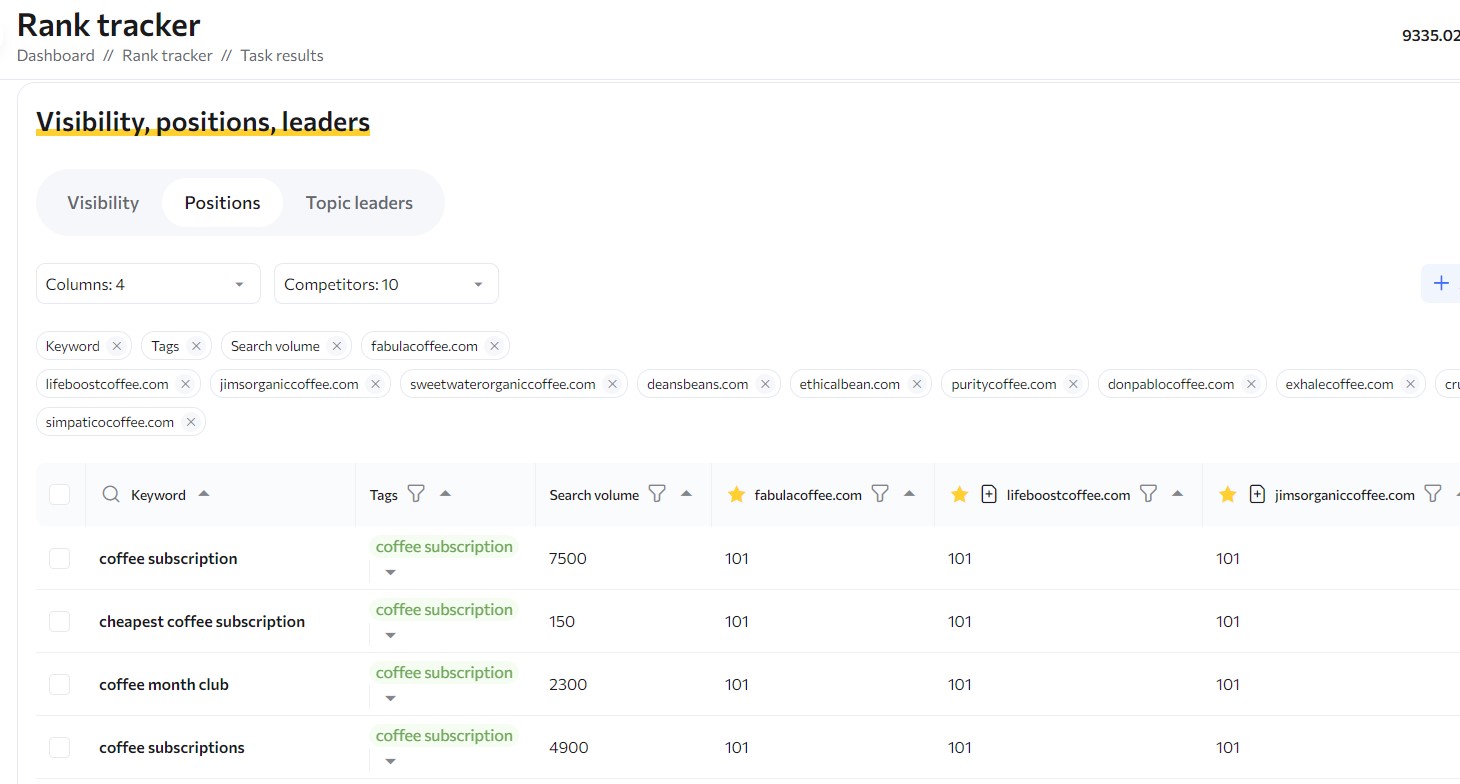
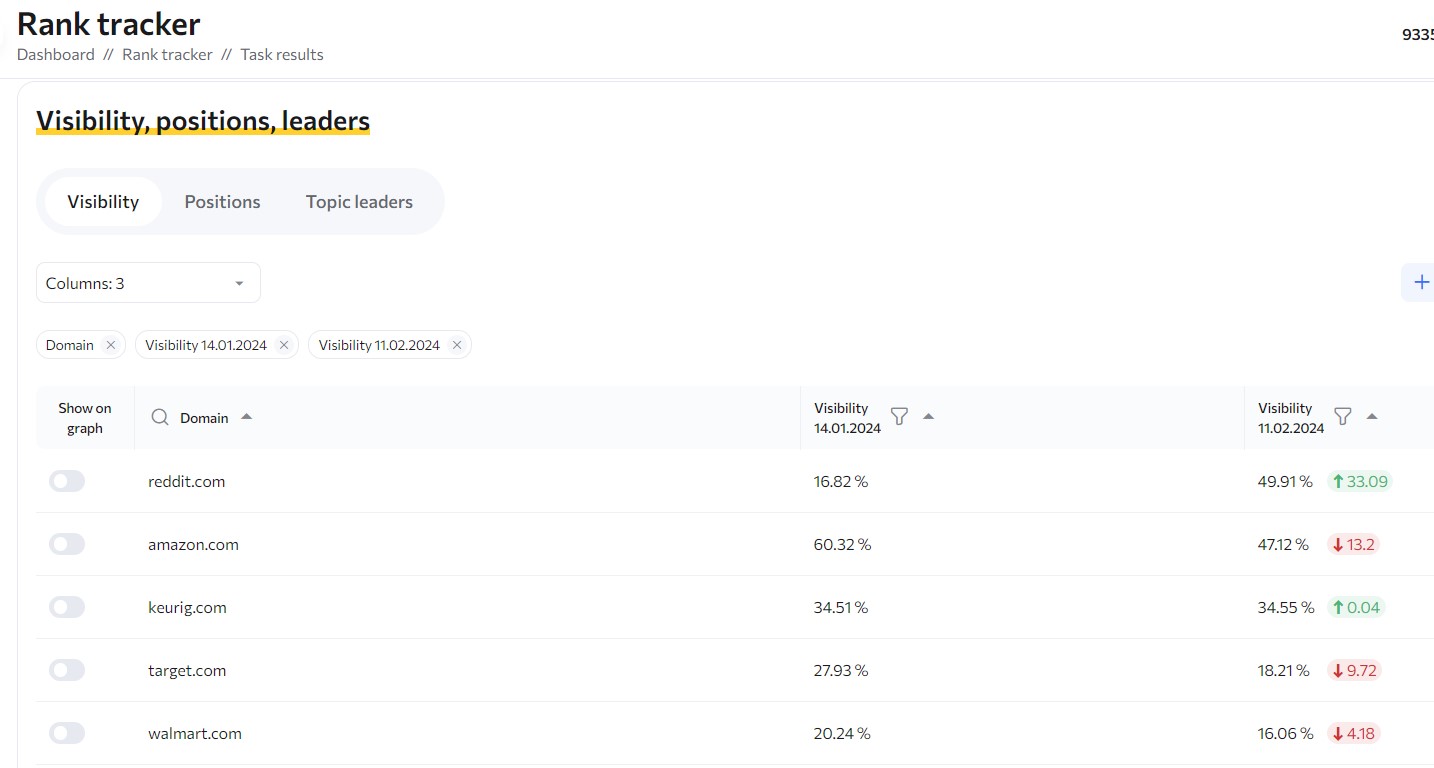
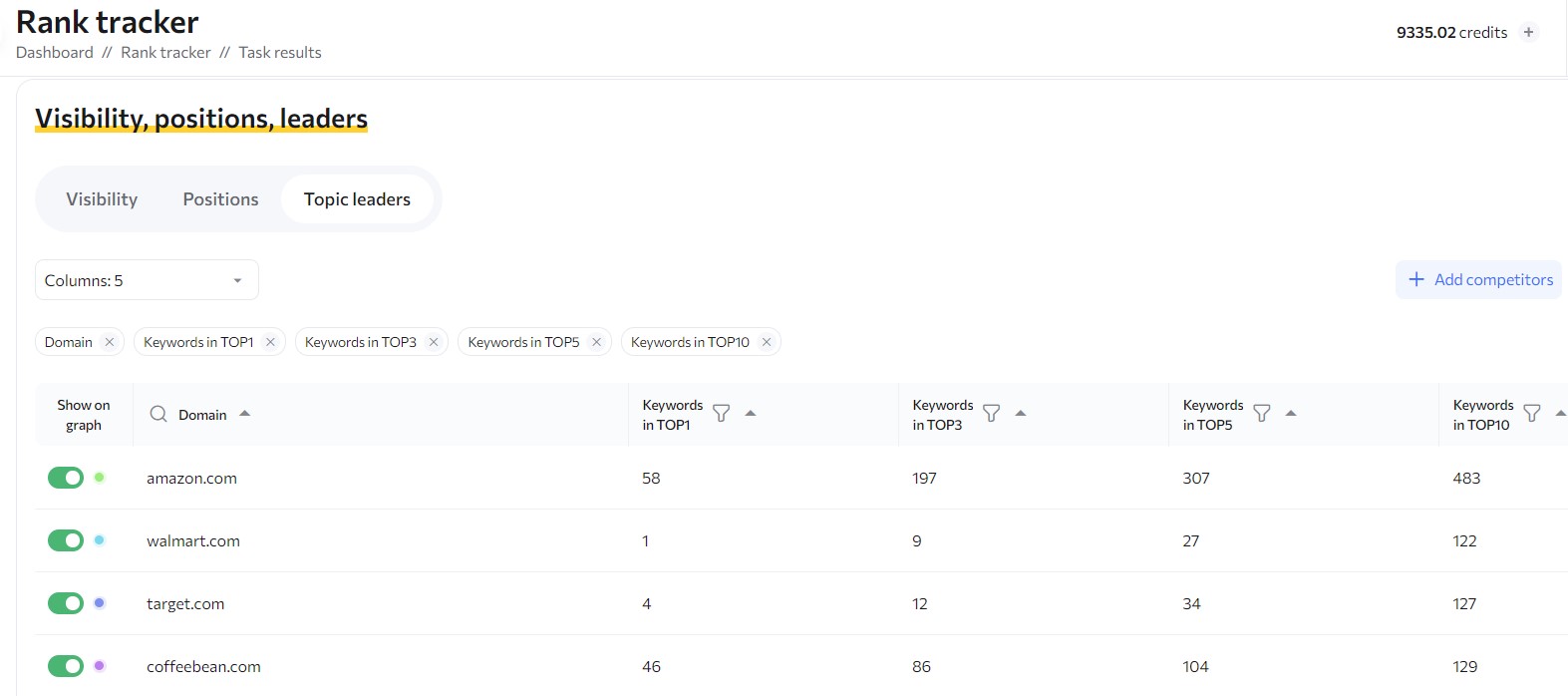
6. Clustering keywords
Grouping related keywords into clusters can help you organize your content strategy more effectively. Keyword clustering allows you to create content that targets multiple related terms at once, improving your chances of ranking for a broader range of searches. To make this process more effective, consider using the Keyword Grouper Tool from Rush Analytics. This tool can help you quickly organize your keywords into logical clusters, saving time and enhancing your content planning.
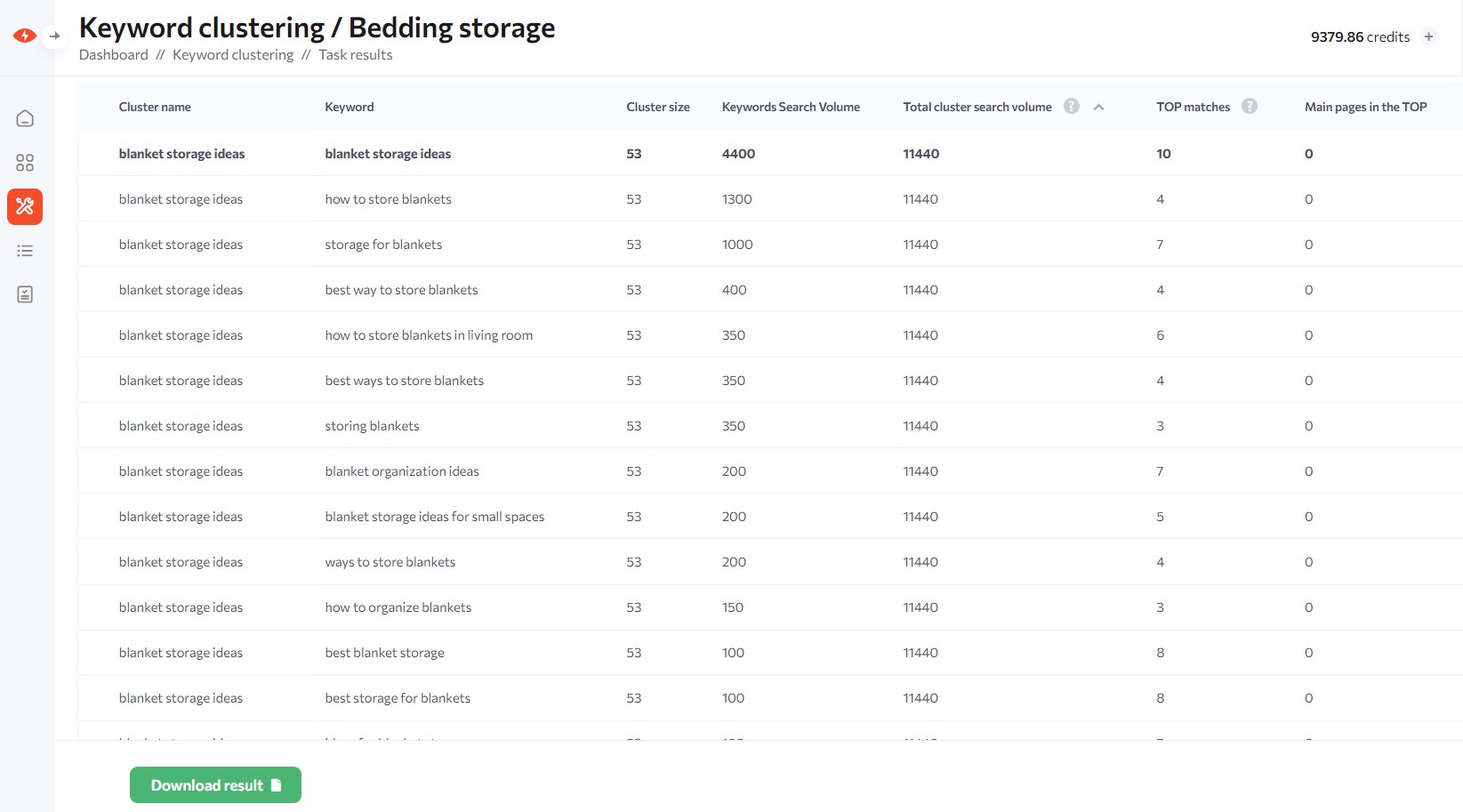
Keyword research is an ongoing process. So we encourage you to stay agile and refine your approach as you learn more about your audience and market trends.
Look through Google’s first page
After compiling your keyword list, it’s time to dive into Google’s search results. You need to analyze the first page of Google for your target keywords to realize what content ranks well and why. This step helps to meet both user needs and search engine preferences.
1. Understanding search intent
Search intent refers to the purpose behind a user’s search query. It’s the “why” behind the “what” they’re searching for. Search intent helps you create content that truly addresses what users are looking for, increasing the likelihood of ranking well and satisfying your audience.
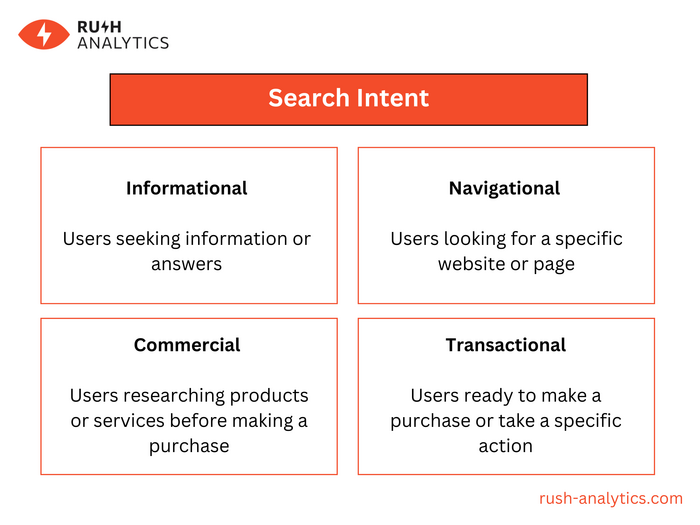
There are four main types of search intent:
- Informational: Users seeking information or answers
- Navigational: Users looking for a specific website or page
- Commercial: Users researching products or services before making a purchase
- Transactional: Users ready to make a purchase or take a specific action
Сontent with the correct search intent more likely will meet user expectations and improve your chances of ranking well. By the way, we had an article on this topic: https://rush-analytics.com/learn-seo/search-intent-seo-guide
2. Analyzing top ranking pages
To analyze the top-ranking pages for your target keywords, start by performing a Google search for each keyword. Pay attention to:
- Content types (articles, videos, listicles, etc.)
- Content length and depth
- Use of media (images, infographics, videos)
- Page structure and formatting
For a more effective analysis, especially when dealing with multiple keywords, consider using the SERP checker tool from Rush Analytics. This tool allows you to examine Search Engine Results Pages (SERPs) in bulk and save time.
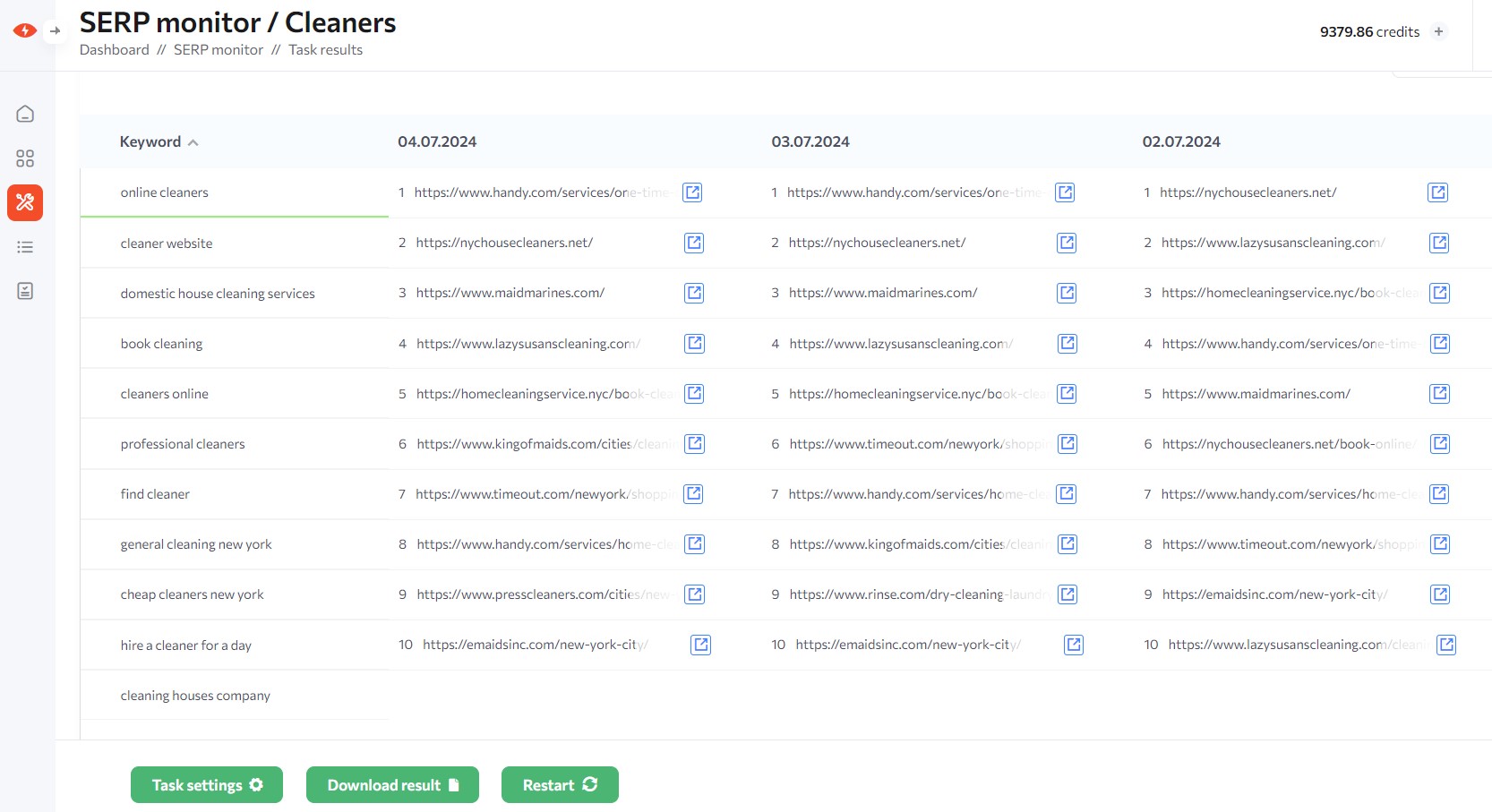
3. Identifying content gaps
As you analyze top-ranking pages, look for content gaps – areas where existing content falls short or topics that aren’t fully addressed. These gaps represent opportunities for you to create quality content. To identify content gaps:
- Note common themes across top-ranking pages
- Look for questions that aren’t fully answered
- Consider different angles or perspectives that aren’t covered
- Think about how you can add unique value based on your expertise or data
4. Evaluating page authority
Page authority determines why certain pages rank well. To judge the authority of the top-ranked page:
- Check the domain authority of the website and page authority of the very page you analyze
- Analyze the backlink profile of the pages
- Look at the content quality, including depth, accuracy, and uniqueness
- Consider the age of the domain and the specific page
Not going to lie, it may be challenging to compete with high-authority sites initially, but focusing on creating superior content and gradually building your site’s authority can lead to long-term SEO success.
For example, this is how our good quality content helped us to conquer the top:
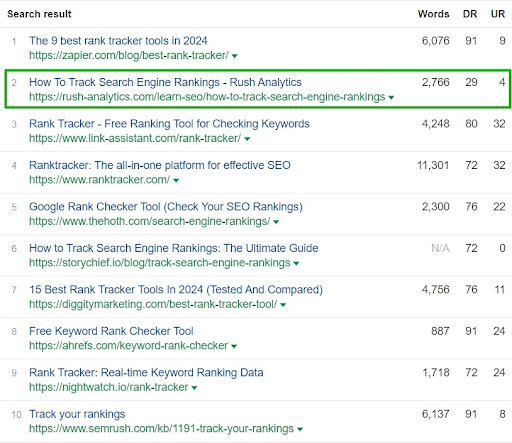
Identify your competitors
Identifying competitors reveals winning SEO tactics in your niche. This knowledge sharpens your strategy, focusing efforts where they’ll have the most impact.
1. Who are your competitors?
To identify your organic competitors, you can use Semrush’s Domain Overview tool. Here’s how:
- Enter your domain into the tool
- Navigate to the “Competitors” section
- Review the list of websites ranking for similar keywords
Pay attention to:
- The number of common keywords shared with each competitor
- Their estimated organic traffic
- The overlap between their keyword profile and yours
Aim to identify 4-5 main competitors who most closely align with your niche and target audience. These are the websites you’ll want to focus on for deeper analysis.
2. Analyzing competitor strategies
Once you’ve identified your main competitors, it’s time to dig deeper into their strategies:
1. Content analysis:
- Examine the types of content they produce (blog posts, videos, infographics, etc.)
- Analyze their content structure, tone, and depth
- Look for content gaps you could fill
2. Keyword strategy:
- Use tools like Semrush or Ahrefs to identify their top-performing keywords
- Look for keyword opportunities they might be missing
3. SEO techniques:
- Analyze their on-page SEO (meta titles, descriptions, header usage)
- Check their internal linking structure
- Examine their backlink profile to understand their link-building strategies
4. User experience:
- Assess their website speed and mobile-friendliness
- Analyze your site structure and navigation
3. Monitoring competitor performance
Bringing you The Rank Tracker tool from Rush Analytics as an excellent resource for monitoring competitor performance.
Here’s how to use it effectively:
1. Set up tracking for your main competitors’ domains
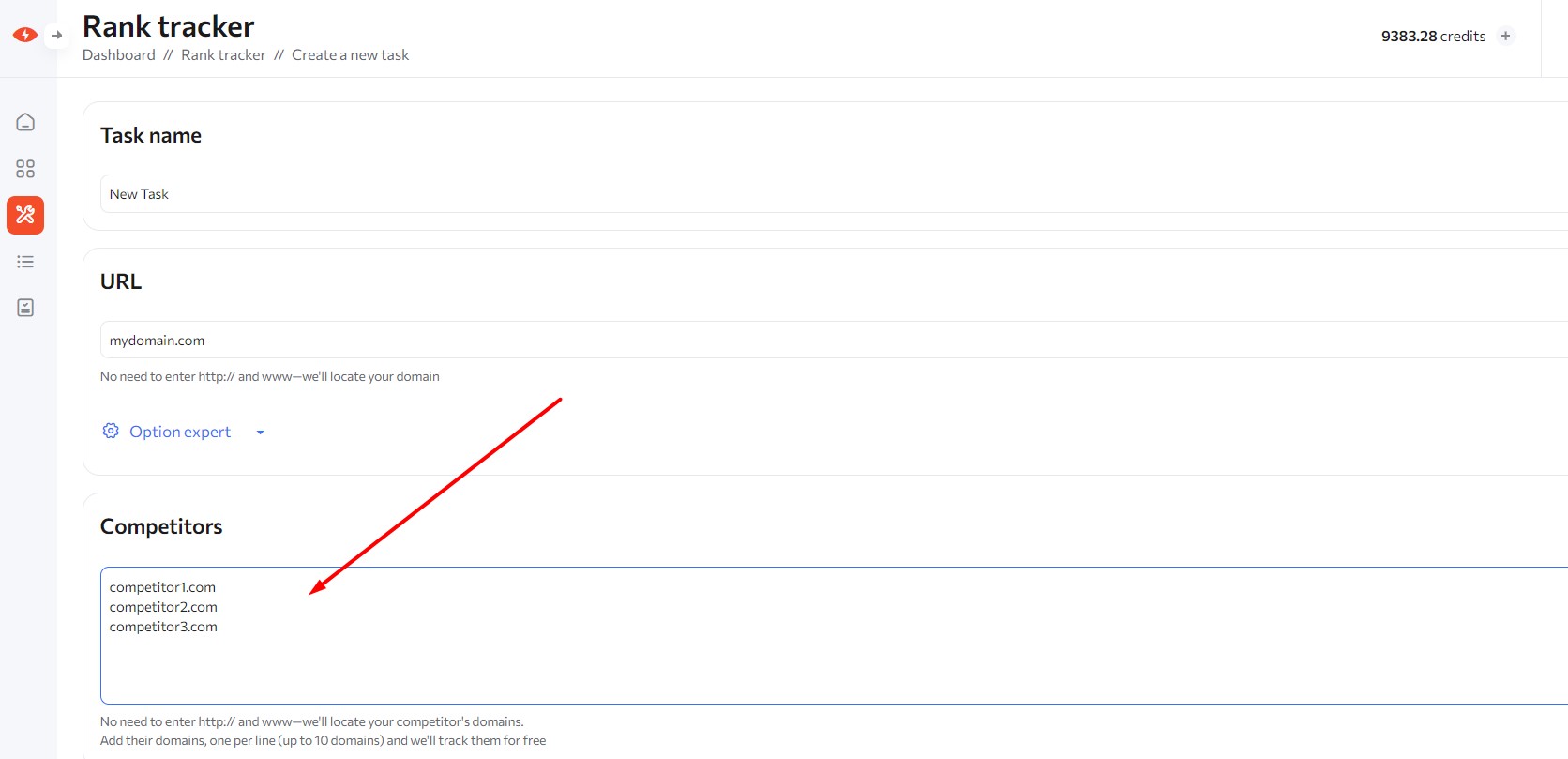
2. Add the keywords you’re competing for
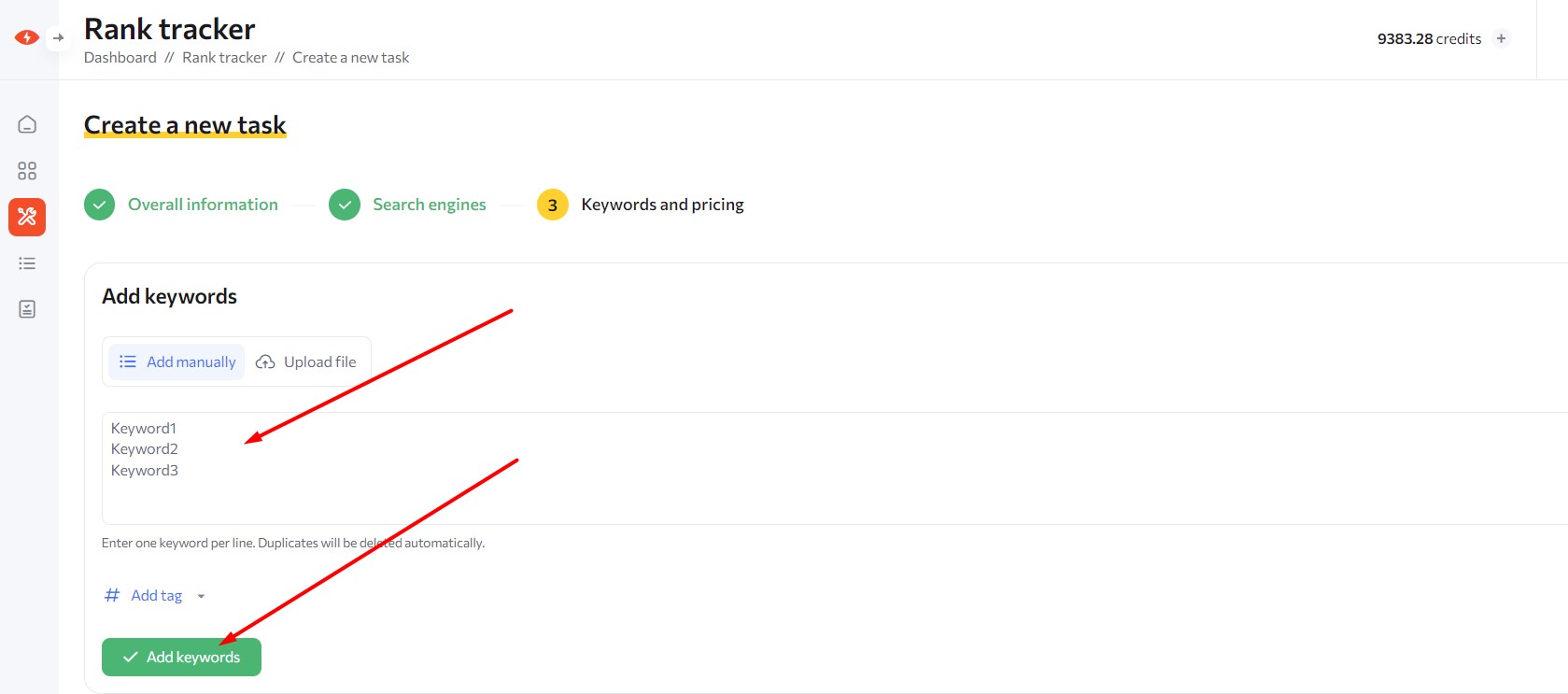
3. Monitor changes in their rankings over time
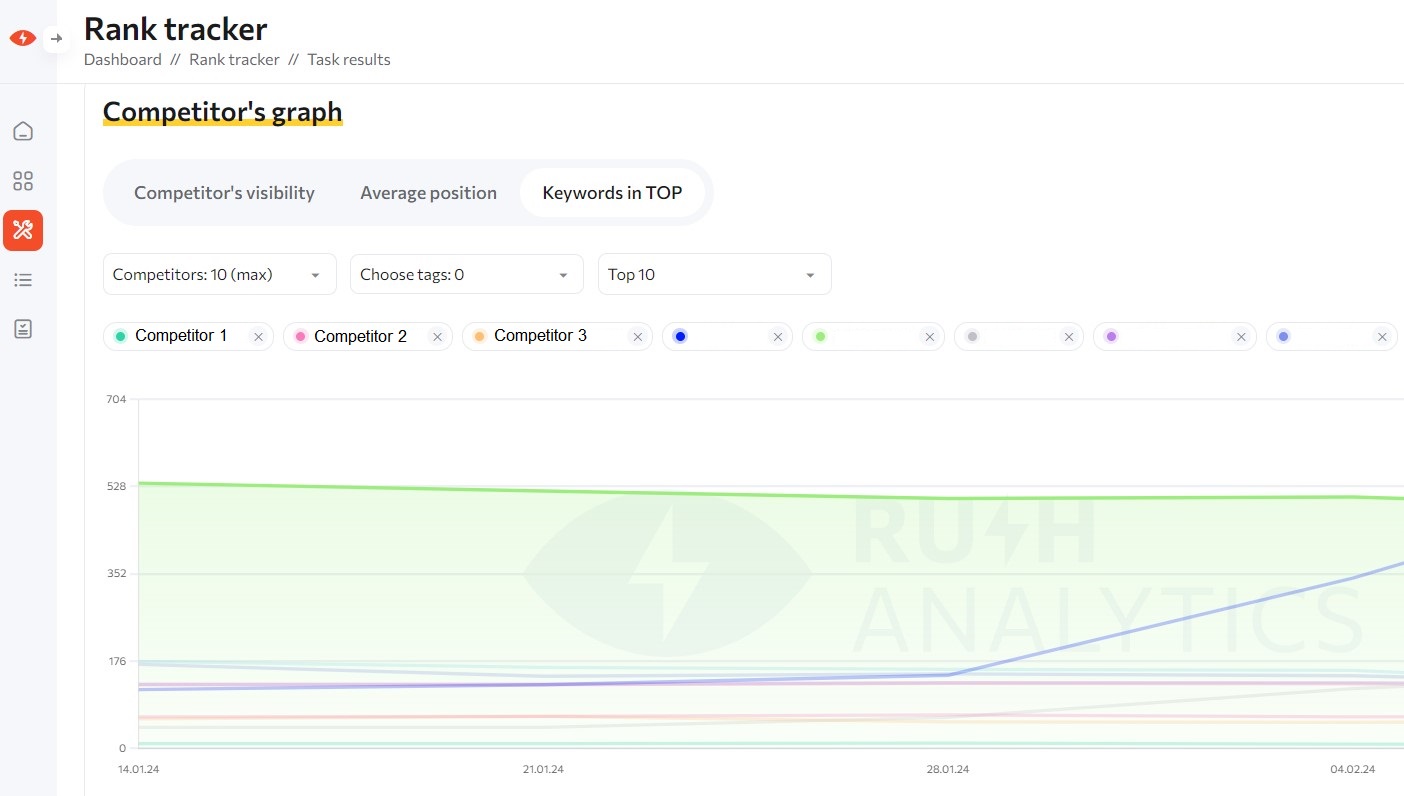
4. Analyze their traffic trends

Key things to watch for:
- Sudden jumps or drops in rankings
- New keywords they start ranking for
- Changes in their content strategy
By consistently monitoring your competitors, you can:
- Quickly identify and adapt to industry trends
- Spot opportunities when competitors’ rankings drop
- Understand the impact of Google algorithm updates on your niche
Competitor analysis is always an ongoing process. Regularly revisit and update your competitor list to work with the most relevant and up-to-date information.
On-page SEO
On-page SEO involves optimizing individual web pages to rank higher and earn more relevant traffic. By mastering these techniques, you can improve your website’s visibility and performance in search results.
1. Title tags
Title tags are the first thing users see in search results.
To create effective title tags:
- Keep them under 60 characters to avoid truncation
- Include your primary keyword near the beginning
- Make them compelling and accurately describe the content
Use the Meta Tags Checker tool from Rush Analytics to be sure your title tags remain consistent over time. It detects any technical errors that might cause your carefully crafted tags to change unexpectedly.
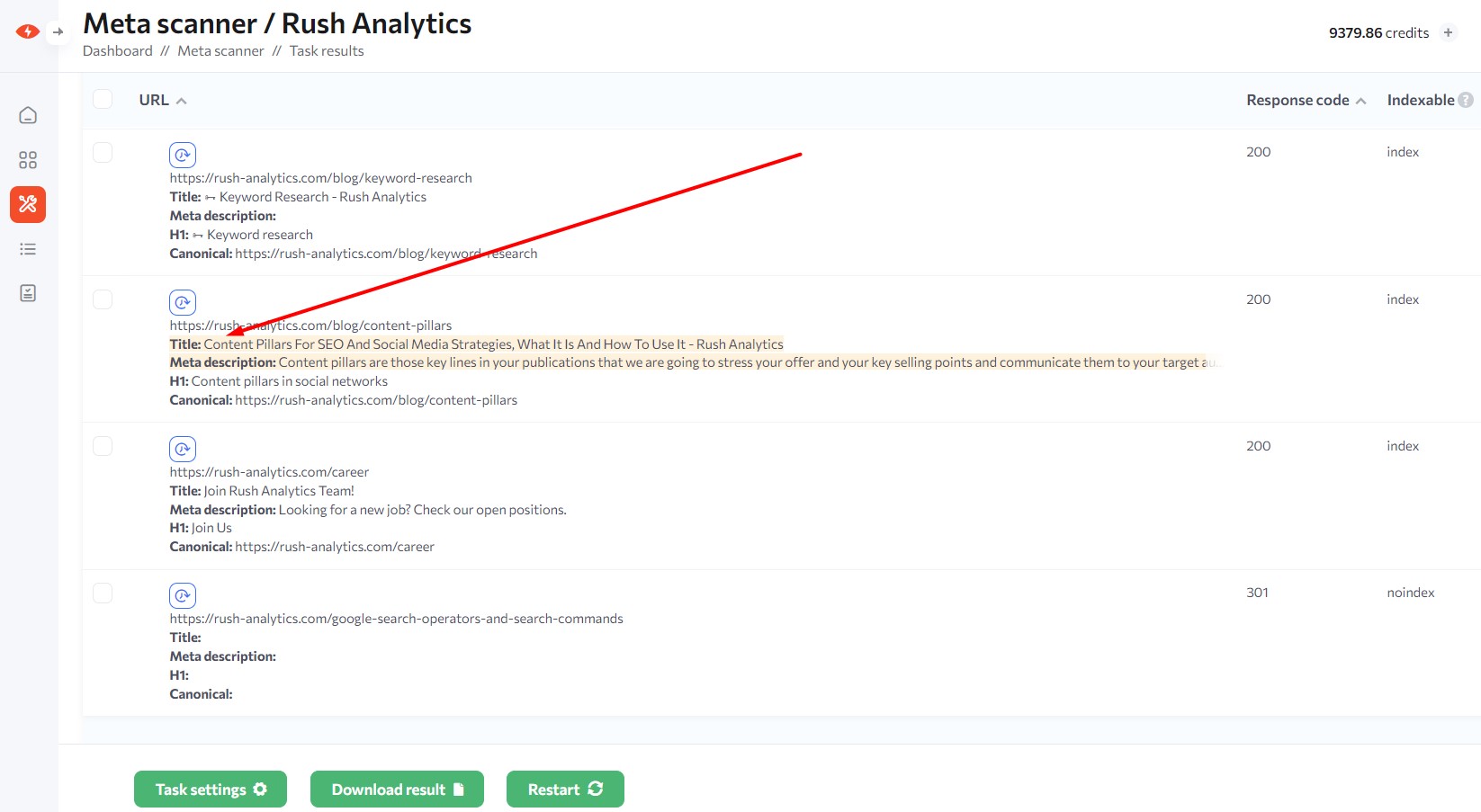
2. Meta descriptions
While meta descriptions have become less critical for rankings, they still play a role in click-through rates.
When writing meta descriptions:
- Keep them under 160 characters. This number will show up in the snippet in Google’s rendition
- Include relevant keywords naturally
- Write a compelling summary that encourages clicks
Remember, Google does not necessarily show the description you put in the code, it may pull it from a page snippet. So focus on creating clear, informative summaries rather than obsessing over perfection.
3. Header tags (H1, H2, H3)
Header tags help structure your content and improve readability:
- Use one H1 tag per page, typically matching or closely related to your title tag
- Use H2 and H3 tags to create a clear content hierarchy
- Include relevant keywords in headers, but prioritize clarity and user experience
Well-structured headers make your content easier to scan for both users and search engines.
4. URL structure
Clean, descriptive URLs benefit both users and search engines:
- Keep URLs short and simple
- Include your target keyword
- Use hyphens to separate words
- Avoid unnecessary parameters or numbers
Example: www.yoursite.com/on-page-seo-guide
5. Internal linking
Internal linking helps search engines understand your site structure and the relationships between your pages.
Effective ones improves site navigation and distributes page authority:
- Link to relevant, high-quality pages within your site
- Use descriptive anchor text
- Create a logical site structure through your internal links
- Link from high-authority pages to boost important content
6. Keyword placement and density
Strategic keyword placement is important, but avoid overstuffing:
- Include your primary keyword in the first 100-150 words
- Use variations and related terms throughout the content
- Aim for a natural flow that prioritizes readability
To optimize your content effectively, consider using the Content Optimizer tool from Rush Analytics.
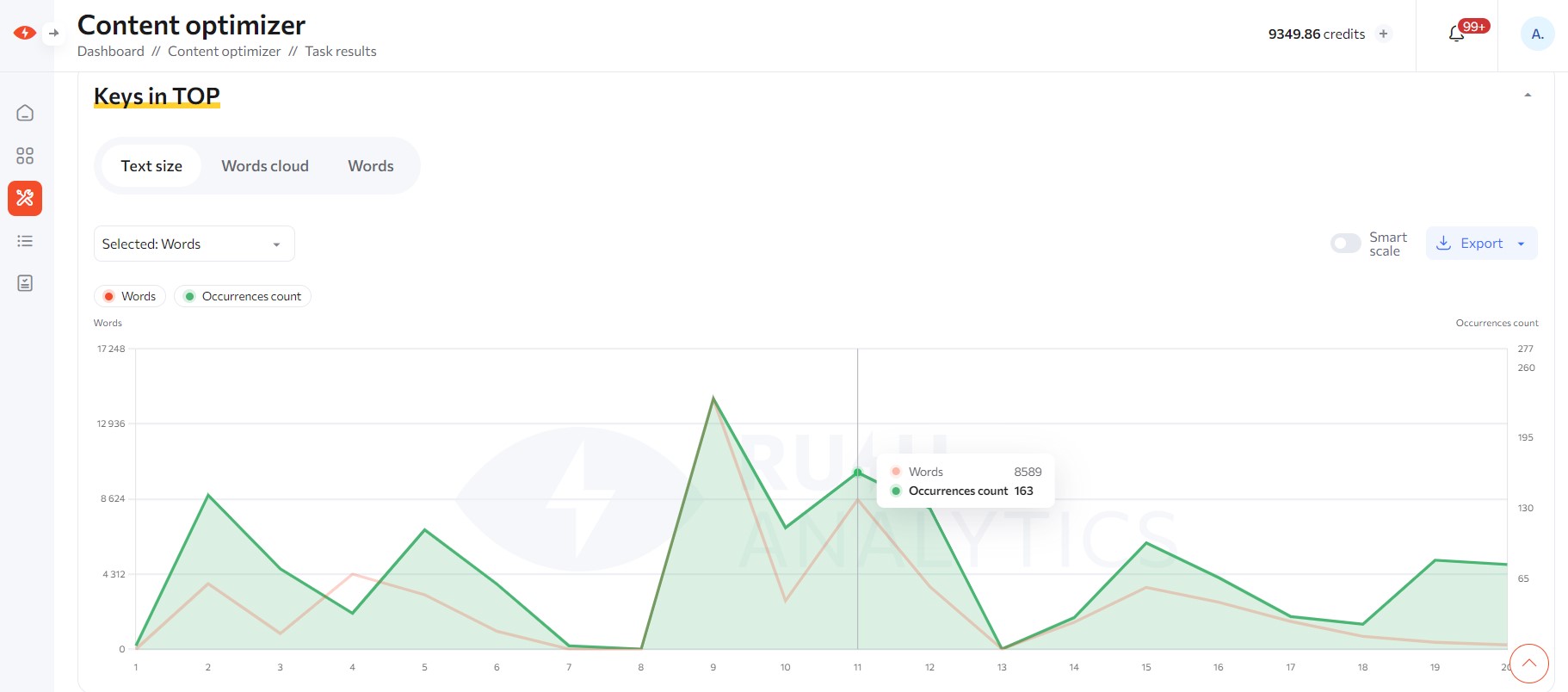
This tool can help you achieve the right keyword density and suggest related terms to include, so your content will be well-optimized without compromising quality.
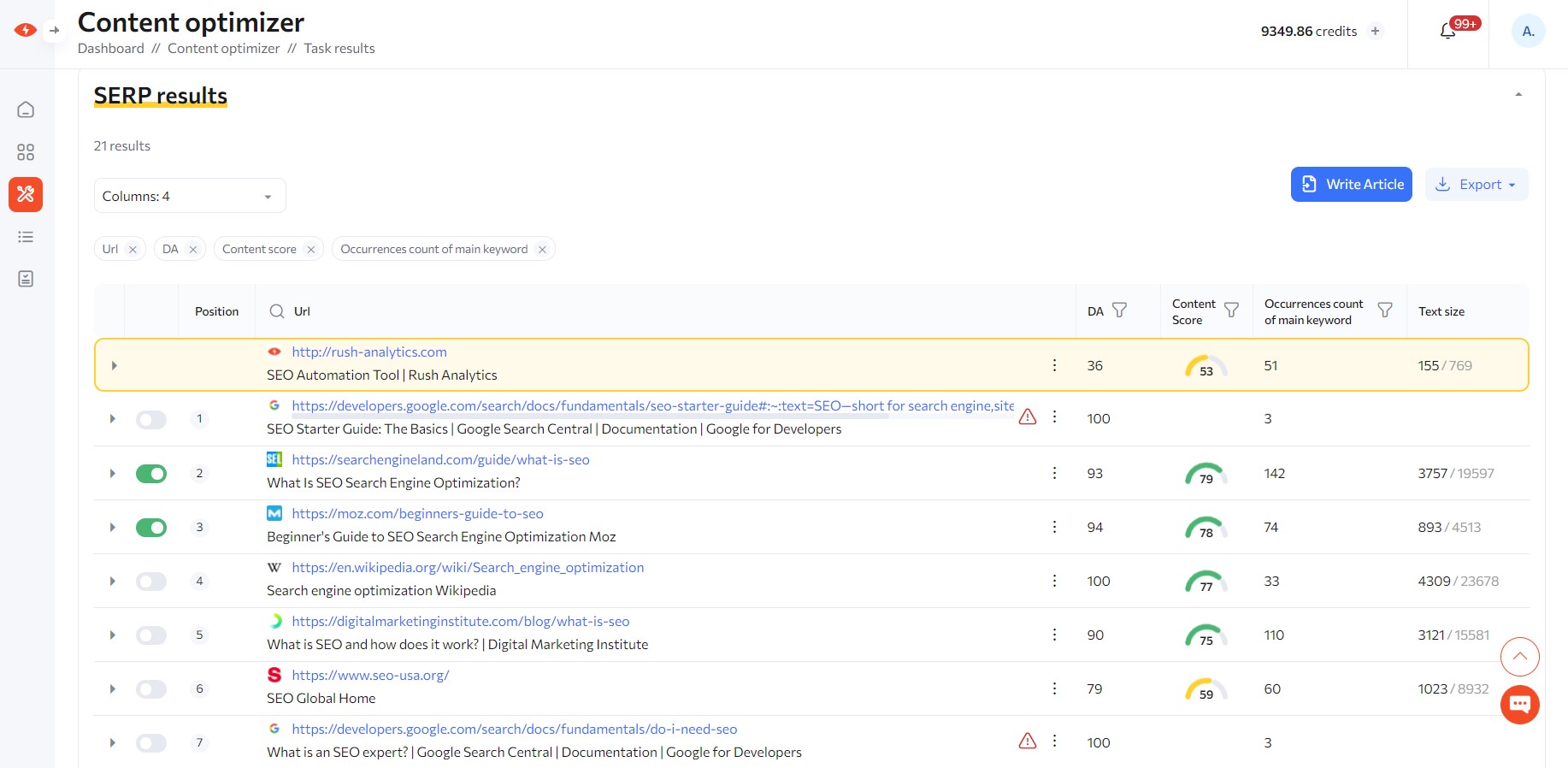
The key to on-page SEO is to balance optimization with user experience – always prioritize creating quality, readable content for your audience.
Optimize images
Image optimization is an aspect of modern web design and SEO. Not only does it improve the user experience by reducing page load times, but it also improves search engine rankings.
1. Importance of image optimization
Why is this so important? Here are several reasons:
- Faster page load times: Optimized images reduce bandwidth usage, leading to quicker loading pages.
- Improved user experience: Fast-loading, high-quality images keep visitors engaged.
- Better search engine rankings: Google favors fast-loading pages with optimized content.
- Reduced storage and bandwidth costs: Smaller file sizes mean lower hosting expenses.
Image optimization creates a win-win situation for both your website visitors and your SEO efforts.
2. Choosing the right image formats
Select the appropriate image format:
- JPEG: Best for photographs and images with many colors. Offers good compression with minimal quality loss.
- PNG: Ideal for images with transparency or text. Provides lossless compression but larger file sizes.
- WebP: A modern format offering superior compression and quality. Supported by most current browsers.
- SVG: Perfect for logos, icons, and simple graphics. Scales without losing quality and has small file sizes.
Choose based on image content and your audience’s browser support. When in doubt, WebP with JPEG fallback is often a good choice.
3. Using Alt Text effectively
Alt text makes your site accessible so:
- Be descriptive but concise (aim for under 125 characters)
- Include relevant keywords naturally
- Avoid keyword stuffing
- Provide context that relates to your content
Example: Instead of “dog.jpg”, use “Golden Retriever puppy playing in a park”
4. Compressing images for faster load times
Compress images to reduce file size without significant quality loss:
- Use online tools like TinyPNG or ImageOptim
- Adjust quality settings in photo editing software
- Remove unnecessary metadata
- Resize images to the largest size needed on your site
Aim for a balance between file size and visual quality. Most images can be compressed by 30-70% without noticeable quality loss.
5. Implementing lazy loading
Lazy loading improves initial page load times. That’s why:
- Only load images when they’re about to enter the viewport
- Use the ‘loading=”lazy”‘ attribute for native lazy loading in modern browsers
- Implement JavaScript solutions for broader browser support
- Consider using a blur-up technique for a better user experience
Lazy loading is particularly beneficial for long pages with many images, significantly improving initial load times and overall performance.
Understand the search intent
Search intent is not just about what users are searching for, but why they’re searching.
1. Understanding different types of search intent
Search intent typically falls into four categories:
- Informational: Users seeking knowledge or answers
Example: “How to bake a chocolate cake”
- Navigational: Users looking for a specific website or page
Example: “Facebook login”
- Transactional: Users ready to make a purchase
Example: “Buy iPhone 13 Pro”
- Commercial investigation: Users researching before a purchase
Example: “Best running shoes 2025”
Identifying the intent behind your target keywords helps you create content that truly meets user needs.
2. Matching content with search intent
To align your content with search intent:
- Analyze top-ranking pages for your target keywords
- Identify patterns in content type, format, and depth
- Adjust your content to match or exceed these expectations
Example: If the top results for “how to tie a tie” are video tutorials, consider creating a high-quality video guide alongside written instructions.
3. Creating user-centric content
User-centric content focuses on solving problems and answering questions:
- Address the user’s primary question or need quickly
- Provide information that goes beyond the basics
- Use clear, accessible language and structure
- Include relevant examples, images, or videos to improve understanding
Remember, search engines aim to provide the finest user experience. Even if your site is brand-new, when you help your audience, it ultimately builds trust and increases engagement and ranks.
Content design is a first
Smart design choices not only keeps readers on your page longer but also increases the likelihood of them sharing and returning to your content.
1. Using subheadings and bullet points
Well-structured content is key to keeping readers engaged:
- Use clear, descriptive subheadings to break up text
- Keep subheadings consistent in style and tone
- Use bullet points or numbered lists for:
- Key takeaways
- Steps in a process
- Lists of features or benefits
It makes your content scannable, allowing readers to quickly find the information they need.
It’s particularly effective for longer pieces, helping to maintain reader interest throughout.
2. Incorporating multimedia
Different types of media can be used to enrich your content:
- Videos: Great for tutorials, product demos, or explaining complex concepts
- Infographics: Ideal for presenting data or summarizing key points visually
- Charts and graphs: Effective for comparing data or showing trends
- Screenshots: Useful for how-to guides or product walkthroughs
When incorporating multimedia:
- Making sure it’s relevant and adds value
- Optimize for fast loading
- Include descriptive alt text for accessibility
Quality trumps quantity. Choose multimedia elements that truly improve your message rather than cluttering your content.
3. Ensuring mobile-friendliness
With mobile devices accounting for a significant portion of web traffic. Be ready to:
- Use responsive design to adapt content to different screen sizes
- Keep paragraphs short for easier mobile reading
- Use larger, tappable buttons for any interactive elements
- Test your content on various devices to see a consistent experience
Consider creating mobile-first content, designing for smaller screens initially and then adapting for larger displays. This approach often results in cleaner, more focused designs across all devices.
4. Enhancing readability with white space
White space, or negative space, is a good design tool:
- Use ample margins and padding around text and images
- Break up long paragraphs into shorter chunks
- Allow breathing room between different content sections
- Use line spacing (leading) to improve text readability
Effective use of white space:
- Reduces visual clutter
- Improves focus on key elements
- Creates a sense of sophistication and clarity
White space doesn’t have to be white — it’s simply unused space that gives your content room to breathe.
Technical SEO
Technical SEO forms effective crawl, index, and render to your pages, laying the groundwork for all your other SEO efforts. Without a solid technical foundation, even perfect content may struggle to rank.
1. Website speed optimization
Aim for load times under 3 seconds to minimize bounce rates and improve rankings. Take the following steps:
- Use tools like Google PageSpeed Insights to identify areas for improvement.
- Optimize images and minify CSS, JavaScript, and HTML. It is important to optimize images and minify code because it significantly reduces file sizes, which decreases load times, and enhances user experience.
- Take advantage of browser caching and enable compression. Utilizing browser caching and compression speeds up repeat visits, reduces server load, and minimizes bandwidth usage, resulting in a faster and more efficient website.
- Consider using a Content Delivery Network (CDN) for faster global access. CDN distributes content across multiple servers globally, ensuring quicker access for users regardless of their location, and providing higher reliability and scalability.
2. Mobile optimization
With mobile-first indexing, mobile optimization is no longer optional:
- Implement responsive design to accommodate all screen sizes: Create a consistent, easy-to-use experience across devices to improve accessibility and engagement.
- Keep text readable without zooming: Maintaining text readability without zooming improves usability and accessibility, making content more accessible on all devices.
- Make buttons and links tappable on small screens: Designing tappable buttons and links on small screens improves navigation and usability, preventing user frustration and errors.
- Test your site using Google’s Mobile-Friendly Test tool: Use such tools to identify and fix mobile usability issues and overall site performance.
Google primarily uses the mobile version of your site for indexing and ranking, so be sure your site performs well on mobile devices.
3. Secure sockets layer (SSL) certificates
HTTPS not only improves security but also is a ranking factor for user trust. Remind yourself:
- Install an SSL certificate to enable HTTPS
- Redirect all HTTP traffic to HTTPS
- Update internal links to use HTTPS
- Check for mixed content issues
4. XML sitemaps
XML sitemaps help search engines understand your site structure. To have a well-structured one:
- Include all important pages with 200 OK response code, but exclude low-value or duplicate content
- Keep your sitemap up to date as your site changes
- Submit your sitemap to search engines via their webmaster tools
5. Robots.txt file
The robots.txt file guides search engine crawlers:
- Use it to prevent crawling of non-essential pages (e.g., admin areas or parametric pages)
- Make sure you’re not accidentally blocking important content
- Include a link to your XML sitemap
- Regularly check for errors in your robots.txt file using tools like Rush Analytics Robots.txt checker
6. Canonical tags
Canonical tags help manage duplicate content issues:
- Use them to specify the preferred version of similar pages
- Implement self-referencing canonicals on unique pages
- Be sure canonical tags are implemented consistently throughout your site
- Use canonical tags for pagination and similar content variations
Proper use of canonicals helps consolidate ranking signals and avoid dilution of SEO authority.
7. Structured data and schema markup
Structured data boosts search results and improves click-through rates:
- Use schema.org vocabulary to mark up your content
- Focus on relevant schema types for your industry (e.g., Product, Review, Event)
- Test your markup using Google’s Structured Data Testing Tool
- Monitor rich snippet performance in Google Search Console
Well-implemented structured data can lead to more attractive and informative snippets in SERP.
8. Fixing crawl errors
Regularly addressing crawl errors to know that all your content is accessible:
- Use Google Search Console to identify crawl errors
- Address 404 errors by redirecting or restoring content
- Fix server errors (5xx) promptly
Avoid orphaned pages by ensuring proper internal linking through our Crawl Errors Checker
Build links
For new websites, link building establishes authority. Here’s a three effective strategies:
- Broken link building helps you replace dead links with your content, benefiting both site owners and their audience.
Steps:
- Find relevant websites in your niche
- Identify broken outbound links with professional tools
- Create content to replace the dead link
- Contact the site owner
- Competitor analysis reveals link opportunities your rivals have already secured.
Steps:
- Identify top competitors
- Analyze their backlink profiles
- Find high-quality, relevant links they’ve acquired
- Create similar or better content
- Reach out to those linking sites
- The evangelist method focuses on building relationships with influencers in your niche.
Steps:
- Find influencers in your industry using BuzzSumo or other resources
- Engage with their content regularly
- Create content aligned with their interests
- Share your content with them
It’s often useful to enlist the help of HARO, ot https://www.connectively.us/. There you can find reporters who need expert opinion. You or your client can act as an expert and get a mention in an article from a good trusted resource.
Prune your content
As your site grows, regularly updating and optimizing your content.
1. Planning for future content updates
When creating your initial content:
- Keep a content calendar noting publication dates
- Tag articles with topics or categories for easy tracking
- Set reminders to review content after 3-6 months
This preparation will make it easier to identify which pieces need updating as your site matures.
2. Strategies for early content improvement
You can start optimizing content quickly:
- Monitor search trends to keep new content relevant
- Update articles with new data or examples as they become available
- Expand early posts with additional insights as you gain expertise
- Improve internal linking as you publish more related content
- Optimize for emerging keywords in your niche
3. Measuring content performance from the start
Begin tracking content performance immediately:
- Set up Google Analytics and Search Console from day one
- Monitor early traffic patterns and user engagement
- Track keyword rankings for each piece of content
- Analyze which topics and formats resonate most with your audience
EEAT
EEAT, which stands for Experience, Expertise, Authoritativeness, and Trustworthiness, is a concept in modern SEO.
Implementing EEAT for New Websites:
1. Experience
- Share personal experiences related to your niche
- Use case studies and real-world examples in your content
- Highlight team members’ hands-on experience
2. Expertise
- Create in-depth, well-researched content
- Showcase relevant qualifications and credentials
- Cite reputable sources and include original insights
3. Authoritativeness
- Build a strong author profile for each content creator
- Seek opportunities for guest posting on respected sites
- Engage with industry leaders and contribute to discussions
4. Trustworthiness
- Your site should have clear contact information and an About page
- Implement HTTPS and keep your site secure
- Be transparent about your content creation process and sources
Building strong EEAT signals takes time. Focus on consistently delivering high-quality, experience-based content, and your site’s credibility will grow naturally.
Additional step: Get a good domain
For new websites acquiring an expired domain can be an interesting strategy. An expired domain with a positive history can provide your site with an immediate boost in authority and credibility. Here’s why this approach can be beneficial and how to do it effectively:
Benefits of using an expired domain:
- Inherit existing backlinks
- Gain immediate domain authority
- Potentially rank faster for target keywords
- Benefit from residual traffic
How to find and recover expired domains:
1. Use the Expired Domain Checker to find available expired domains relevant to your niche.
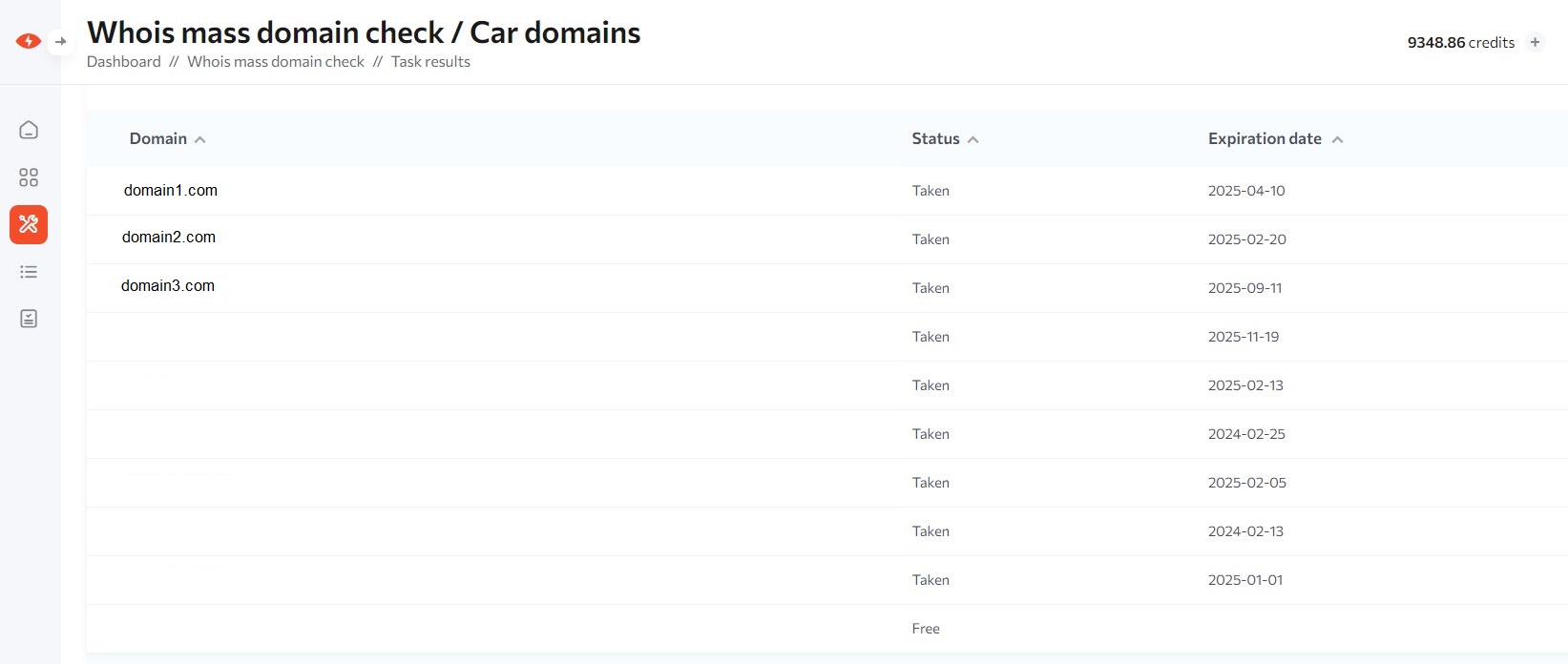
2. Once you’ve identified potential domains, use the Domain Authority Checker and look for domains with a good balance of authority and relevance.

Key factors to consider:
- Relevance to your niche
- Clean backlink profile (avoid spam)
- Positive domain history
- Age of the domain
- Existing traffic potential
While using an expired domain can give you a head start, vet any domain before purchase. Pay attention and check it doesn’t have a history of spam or penalties that could harm your new site. You can use Backlink Spam Checker for this purpose. It will help you avoid buying sites which were suspended for scummy content earlier.
Use this strategy as a boost, not a shortcut, in your overall SEO plan.
Final words
Congratulations! You’re now equipped with the tools you need to start your new website’s SEO journey. Remember, SEO isn’t a sprint — it’s a marathon. Stay curious, be patient, and keep refining your approach.
From keyword research to content creation, from technical optimization to link building, each step you take brings you closer to search engine success. Embrace the EEAT principles, keep your content fresh, and don’t forget to explore the potential of expired domains for an extra boost.
Stay persistent, track your progress, and celebrate small wins along the way. Your dedication will pay off as you watch your site climb the rankings and attract more organic traffic. Here’s to your SEO success — you’ve got this!
Get 7 days free trial access to all tools.
No credit card needed!

Conclusion
This article outlines a step-by-step process for performing SEO for new websites, including keyword research, understanding search intent, creating content, and building backlinks. It also highlights the importance of technical SEO and selecting a strong domain. These steps are essential for improving the website’s visibility in search engines and attracting targeted traffic.
FAQs
What are the best tools for keyword research?
Popular keyword research tools include Google Keyword Planner, Rush Analytics, SEMrush, and Ahrefs. Each offers unique features for finding relevant keywords, analyzing search volume, and assessing competition.
How often should I update my SEO strategy?
SEO is an ongoing process that requires regular attention. Review your strategy quarterly, but be prepared to make adjustments more frequently. Stay updated on algorithm changes, industry trends, and your website’s performance. Conduct an audit annually. Consistent small tweaks often yield better results than infrequent major overhauls.
How can I measure the success of my SEO efforts?
Key metrics include organic traffic growth, keyword rankings, click-through rates, and conversion rates. Use tools like Google Analytics and Search Console to track these. Monitor your domain authority and backlink profile. Also, assess user engagement metrics like time on page and bounce rate. Set specific, measurable goals and regularly compare your performance against these benchmarks.
What is the role of social media in SEO?
While social media signals aren’t direct ranking factors, they indirectly impact SEO. Social platforms can increase brand visibility, drive traffic to your site, and amplify content reach. They also provide opportunities for link building and can influence search queries.
How important is mobile optimization for SEO?
Highly important. With Google’s mobile-first indexing, your site’s mobile version is prioritized for ranking and indexing. Responsive design, fast loading times, and easy navigation on mobile devices makes you stay competitive.
Can I do SEO on my own, or do I need to hire a professional?
You can certainly start SEO on your own, especially for a new website. Many resources and tools are available to learn and implement basic SEO strategies. However, as your site grows or if you’re in a competitive niche, professional help can save precious time. Consider your budget, time constraints, and the complexity of your SEO needs when deciding.

